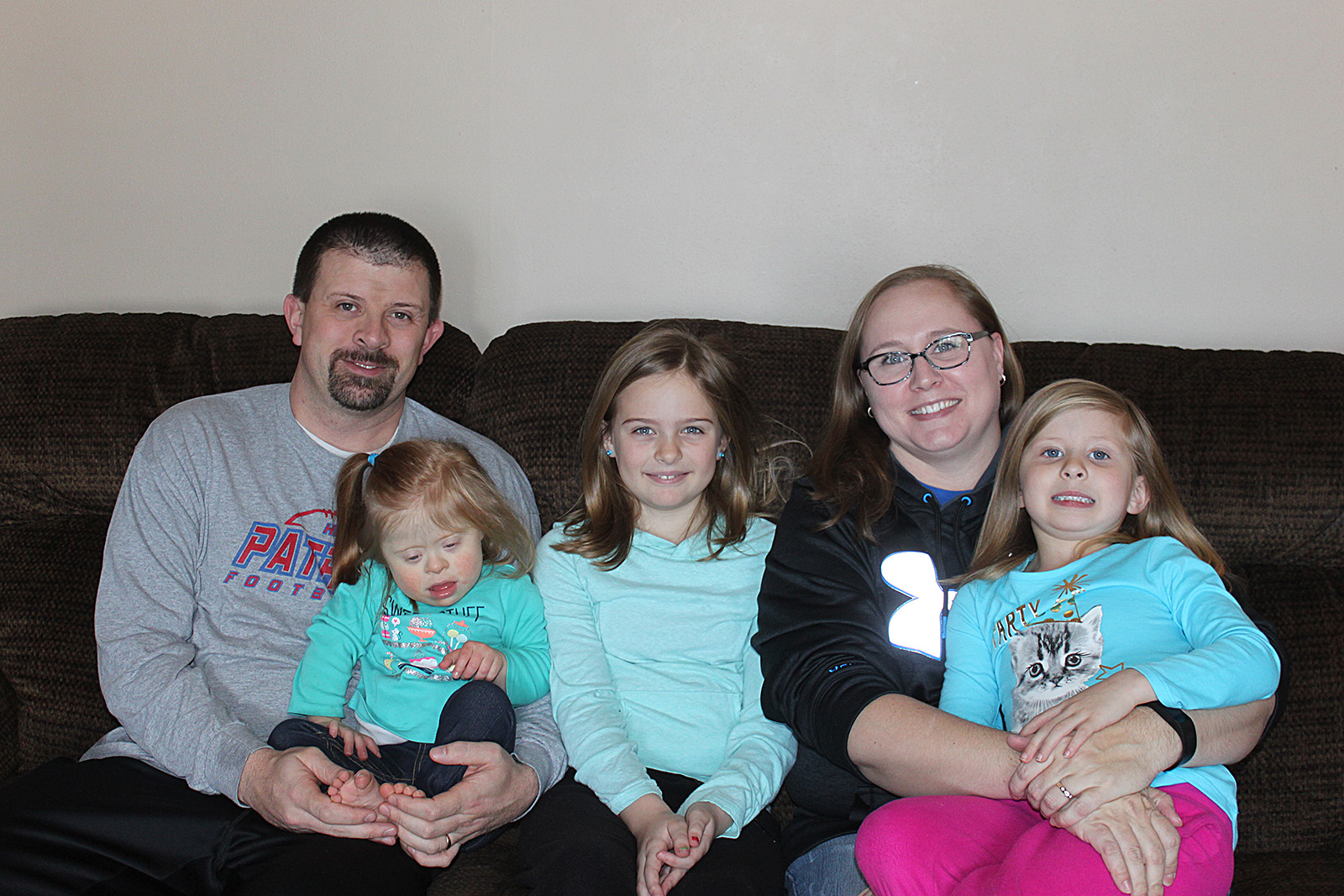
A carbon monoxide detector is credited for saving a Hills family late in December.
Melissa Gehrke and her daughters were sleeping in their home on East Second Street at 4 a.m. and Pete Gehrke was at work in Sioux Falls when the family’s carbon monoxide detector sounded off.
“When the first alarm sounded, I thought the battery was low so I grabbed the stepstool, took the top off and by that time the second alarm was sounding,” Melissa Gehrke said.
“Then I realized there was something wrong. I flipped the lights on, woke the girls, grabbed some clothes, my cell phone and told the girls to go out to the van in our garage. I had to go back in the house to get medicine for our youngest daughter, Sophie.”
She said she handed her phone to their oldest daughter, Taylor, and told her to call 911 if she didn’t return.
“When I returned to the van, I backed the car into the driveway of our neighbors, Alan and Bonnie Leenderts, and called 911. By that time my adrenaline was really going,” she said.
“When the firemen arrived, they could detect the carbon monoxide, and when entering the basement, their masks became foggy. They also went up on the roof to check our vent. The cause of the carbon monoxide was a crack in our furnace.”
Melissa said she wants everyone to know how important it is to install these alarms. The detectors they own are also smoke alarms, and they talk, informing the occupant of why the alarm is sounding.
The Gehrkes have two alarms — one on their main floor and one in their daughters’ room.
Assistant Fire Chief Jared Rozeboom shared his experience when he arrived on the scene.
“When we arrived on scene, we assembled a crew and entered the home with our gas monitor. Upon entering the home, our monitor was reading around 200 PPM (parts per million),” he said.
“Once the crew entered the utility room where the furnace is located, those levels immediately rose to 540 PPM. The crew then shut down the furnace and began to open up windows and doors in the home to ventilate the carbon monoxide from the home.”
He said they also accessed the roof to check the vents due to the amount of snow that was on the roof, but he said it was not the snow on the roof that was causing the problem.
Rather, he said it was a malfunction of the furnace that caused it to release deadly levels of carbon monoxide into the home.
Rozeboom said this emergency carries an important message for everyone.
“While we have long stressed the importance of having a working smoke alarm and carbon monoxide alarm, it is always hard to measure the success of prevention. If nothing bad happens, was it luck, or was it because of something else?” he said.
“In this case it was because they had carbon monoxide alarms installed, and they had properly working batteries installed in them. So many times we hear of lives lost because they either didn’t have alarms installed or they didn’t have working batteries installed in them. Here we can measure the lives that were saved because of a properly installed and working carbon monoxide alarm. Had these alarms not sounded, we would be talking about a totally different outcome here. The levels of carbon monoxide in the home that night would have turned deadly in just a few short hours.”
Rozeboom said the working carbon monoxide alarms are only part of the story.
“You can have all the alarms in the world, all the best alarms ever made. You still have to act when they sound. That’s what Melissa did that night. She did the right thing when the alarms went off. She recognized the danger she and her family were facing and she removed them from the danger and called 911. That’s the other part of the story that we want everyone to know about,” he said.
“When these alarms go off in your house, get out. Don’t try to be the hero and find where the carbon monoxide is coming from. The real hero takes their family, leaves the house and calls 911. Let the firemen come and verify the carbon monoxide level and locate the source.”
He’s relieved in this case to report on the success story of everything done right.
“We can’t stress enough the importance of having a properly working carbon monoxide and smoke alarm and knowing what to do when they go off,” Rozeboom said. “Test them every month and change the battery when you change your clocks. It really is a matter of life of death.”


